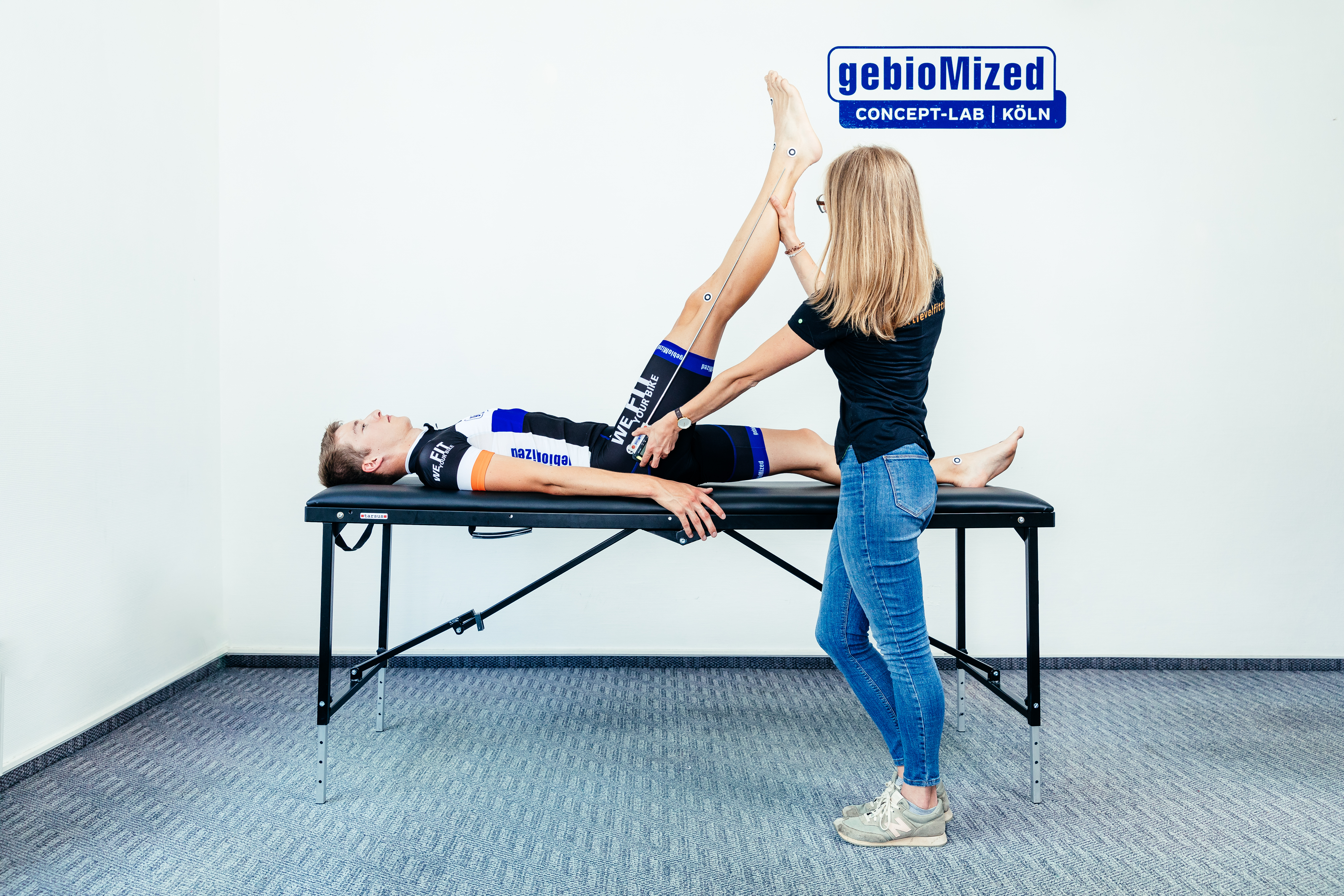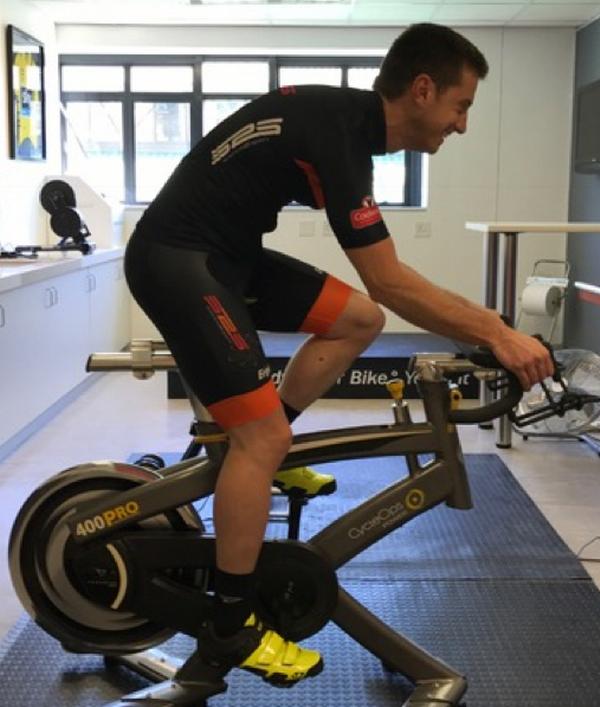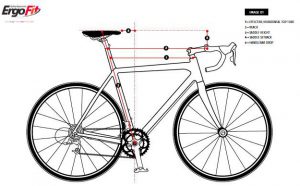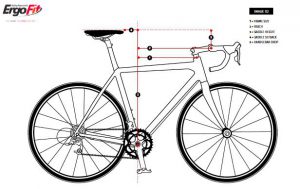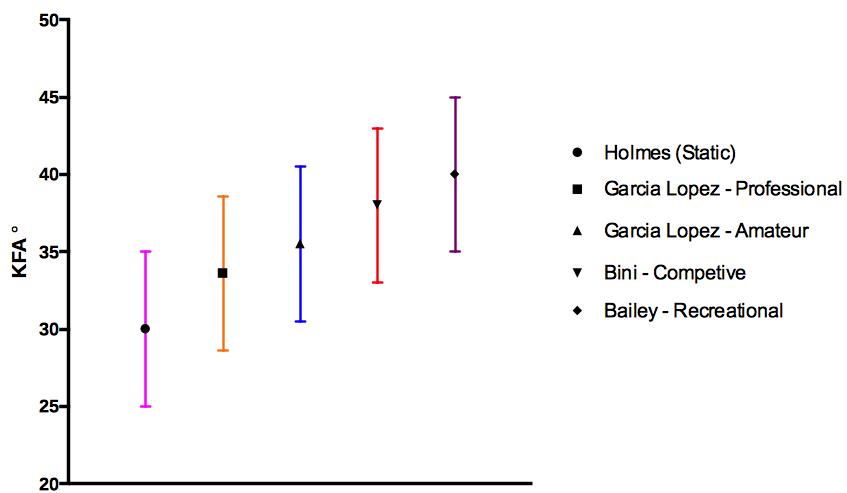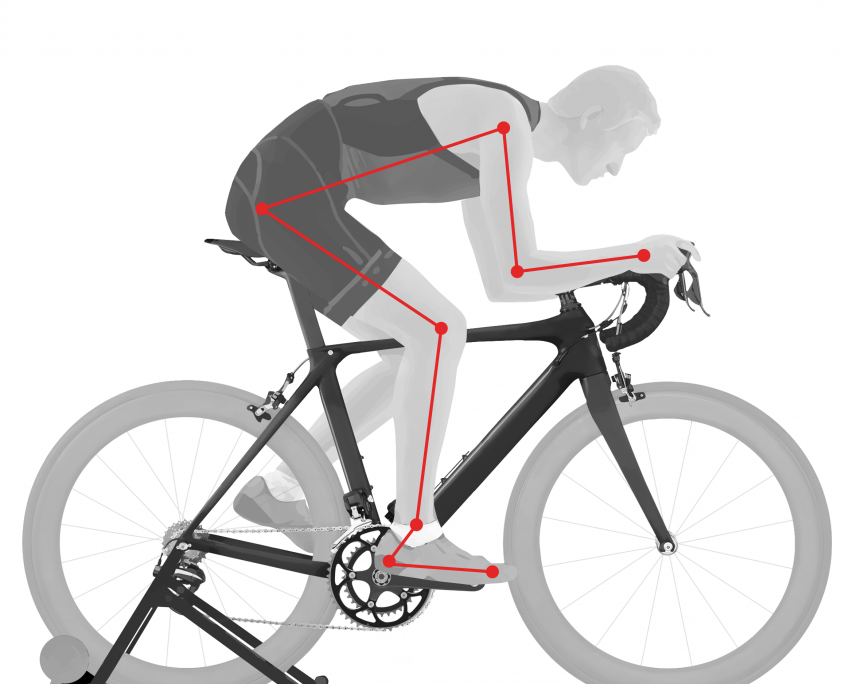The Science of Bike Fitting
Guest column by Jeroen Swart and Wendy Holliday (Science 2 Sport, South Africa)
Bike fitting, or cycling biomechanics when referring to the scientific research and methods, is a rapidly evolving field with ever increasing numbers of tools at the fitters disposal. Despite this proliferation of technology, less than 15% of the tools available are validated scientifically for their accuracy and efficacy (whether they do what they say they do). As such it is important to highlight a number of concepts and dispel some misconceptions regarding bike fitting in general.
Pre-fit assessment
Any good bike fitting will start with an evaluation of the cyclist. How in depth this evaluation becomes depends on the level of the bike fitting being requested (more in-depth assessments take longer and naturally cost more) as well as the expertise of the fitter. In many cases this may be a clinically trained individual such as a physiotherapist, biokineticist or sports medicine specialist. The clinician is the appropriate choice if the cyclist is wanting to prevent injuries or gain insight into possible causes of an existing injury. This is important as some problems may not be related to the bike at all and rather be a manifestation of “intrinsic factors” in the cyclist. During this assessment various measurements will also be taken. These will include stature, leg length, arm length and other measurements such as hamstring and spine flexibility tests. These are all necessary measurements as they provide the fitter with insight regarding the final position that the cyclist is likely to be able to adopt.
Predictive Fitting
Before asking the cyclist to climb onto the bike there are two important steps to bike fitting that should not be overlooked.
The first is a prediction of the optimal fitting. The importance of this is not immediately obvious to most people seeking a bike fit.
An important starting point is that the fitting should be conducted on the correct frame size. This is harder to achieve than it seems. Most bicycle manufactures simply refer to a range in stature (height) and recommend specific frame sizes based on this. However, this ignores two very important aspects. One is the ratio of leg length, torso length and arm length. The second is flexibility. Take two individuals with exactly the same stature. One may have very long legs and a very short torso. The other may have the opposite i.e a very long torso and short legs and arms. These two individuals may require frames that are up to two sizes apart. The individual with long legs and short torso will likely require a smaller frame size as the distance to the handlebar (which is based on frame size and stem length) needs to be shorter. The opposite applies to the individual with short legs and a long torso. They will require a larger frame size.
The next important factor is flexibility. Once again consider two individuals but this time with identical arm and leg lengths. However, one may be exceptionally flexible and the other may be exceptionally stiff. The individual who is stiff may have reduced hamstring flexibility and reduced spine flexibility. This would require a lower saddle height and a shorter frame and handlebar reach. These sorts of requirements are not evident from a simple stature measurement and could result in someone purchasing the incorrect frame size.
Without a predetermined set of parameters it is not possible to determine the correct frame size to a high degree of accuracy. An incorrect frame size can be manipulated to create the impression that the bike fits, but there will be consequences such as compromised handling or sub-optimal muscle recruitment patterns.
For example, a frame that is too large can be adjusted to fit a rider by shortening the stem or reducing the saddle setback. However, this will result in reduced centre of mass over the front wheel, resulting in under-steer and the possibility that the front wheel will slide out in sharp turns or in wet conditions. If adjusted by altering setback this may result in over recruitment of the quadriceps, placing them at risk of premature fatigue. Either way, establishing the correct ratio between frame size, stem length and saddle setback prior to the fitting will allow the fitter to achieve these macro adjustments speedily and once again save time so that this can be used on more nuanced aspects to fully optimise the fitting.
From the pre-fit evaluation the fitter will also have a set of information that will be useful in determining the correct position of the saddle height, saddle setback, handlebar reach and drop. With a very high level of experience a good fitter may be able to make a reasonably accurate estimate of the correct frame size and these parameters before checking the fit. However, it is possible to achieve a reasonably comfortable position with the incorrect ratios of these measurements and the cyclist would not be aware of this. An example is setting the saddle higher than optimal but with less saddle setback. The saddle would be in the same effective saddle height and knee flexion angles would be similar. However, the more forward position would result in over-recruitment of the quadriceps and a position with the center of mass too far forward. Similarly, using too much handlebar drop and not enough reach would provide a similar torso position but with too much lumbar flexion, resulting in a risk of lower back pain. An example of this type of position is seen below.
Because there are numerous factors that influence this decision making process (as per some of the examples above) a computerised prediction of the optimal fitting makes this process dramatically easier, more accurate and faster.
At present, there is only one predictive system available that includes measurements of the various lengths of limbs and stature as well as including other factors such as flexibility, cycling experience and other factors in predicting the optimal fitting. This is the ErgoFiT system developed by Science to Sport.
This system uses data from over 4500 successful laboratory fittings and uses multiple intrinsic factors to predict the optimal position with a high degree of accuracy. This will allow the fitter to achieve a very good position before spending time refining the position with more sophisticated techniques.
Objective measurement of bike parameters
The second important step before asking the cyclist to climb on the bike is to accurately measure the initial position of the bike. This allows the fitter to record the initial position so that any changes can be recorded for reference once the fitting has been concluded. Sometimes it may be necessary to reverse a specific change and without recording the initial position this becomes impossible.
It is also very important to measure the bike parameters accurately. Many bike fittings are performed without objective measurements. Performing objective measurements requires a universal reference point. The simplest reference point is the crank axle or bottom bracket. All measurements should therefore refer to their position relative to the crank axle. An example of a measurement which is not objective is measuring the distance from the tip of the saddle to the handlebar.
Two ways of performing objective measurements are highlighted in the diagrams below. The first uses a set of traditional measurements related to a line along the bike seat-tube. However, due to the advent of the 29er mountain-bikes, aero-bikes and other advances, many manufacturers are no longer creating bikes with seat-tubes set at 73-74 degrees. This makes it impossible to perform traditional measurements without the use of a mechanical jig or a laser reference line. As such, we are advocating for a move to a very simple X-Y reference for all bike parameters. Some manufacturers such as Open bikes have already started referencing frame size in this way as opposed to the traditional measurement of horizontal top tube length. Over time we hope that all bike fitters will move to this more objective and accurate measurement system which can be achieved by using a simple self-levelling cross hair laser available at most building supply stores.
Assessment of the rider position
Only now is it time to ask the rider to mount the bike and to assess whether the fitting is optimal.
There are many ways and tools that are available to assess optimal fit. All of these have advantages and limitations and the fitter should ideally use a variety of assessments and also determine whether these are in agreement before making any alterations to the bike fitting.
Static vs Dynamic kinematic assessment
There is a misnomer that the simple process of using a goniometer or digital inclinometer to evaluate the position of the cyclist while they standing still and not pedalling (static kinematics) is somehow inferior to more expensive and difficult techniques such as dynamic 3D kinematics or 2D kinematics (the use of infrared markers or a camera to track movement while pedalling). However, recent research has shown that all of these methods have similar levels of accuracy, reliability and validity (they measure what they are supposed to measure)1. The use of static 2D kinematics, particularly for setting saddle height may be more reproducible (when using the Holmes method*) than dynamic kinematics. This is because dynamic measurements (assessment while pedalling) differ depending on the cyclist’s power output and therefore need to be assessed at a specific percentage of maximal heart rate or power output2. This may make these assessments less reliable if the fitter does not control for the power output during analysis. For example, during dynamic pedalling the ankle joint initially moves into a more plantar-flexed position at the BDC position. Due to the fixed contact points this drives the knee joint into greater flexion than the 25˚-35˚ range recommended using the Holmes method. The change in knee flexion angle is in the region of 8˚. However, with increasing intensities above 80% of peak power the force applied to the pedal by the hip and knee extensors overload the ability of the ankle plantar flexors and the ankle moves into dorsiflexion with a resultant reduction in knee flexion angle of approximately 3˚.2
In addition, there seems to be a progressive reduction in knee flexion angle with increasing experience in cycling and with an increased participation level. This has not been studied formally but a comparison of the dynamic knee flexion ranges from studies by Baily et al3 (recreational cyclists, Bini4 (competitive cyclist) and Garcia Lopez et al5 (amateur and professional cyclists) suggest that dynamic knee flexion angle decreases with increasing level of experience and competition.
A rough approximation of this data is presented below.
Unfortunately there is also very limited research to help guide the interpretation of dynamic whole body measurements such as 2D video kinematics or 3D kinematics. Going forward these techniques have a lot of promise, especially newer systems which use enough markers to detect hip and shoulder position optimally and which are able to provide analyses without excessive time processing the data. Bike fitters should be aware of the limitations of dynamic systems which do not measure hip and shoulder angle accurately due to the limited number of markers. An example is demonstrated in the diagram below. Without markers on the spine it is not possible to measure the hip angle, lumbar flexion, thoracic flexion or shoulder angle accurately. These systems should not be used for any kinematic assessment of joint angles for the hip or shoulder.
Dynamic whole body kinematics can however be used to assess stability and quality of motion. However, these are subjective measurements and are not easily quantified nor supported by existing scientific research. An exception to this is the use kinematics to assess lower limb motion in the coronal plane in the assessment of medio-lateral deviation6:7. These assessments can be used in conjunction with contact point pressure mapping in the cyclist’s shoes to guide the balance between stability and plantar foot pressure.
Saddle pressure mapping
Of all the dynamic assessments, saddle pressure mapping provides the most practically relevant and meaningful data. This may seem counterintuitive but measuring saddle pressure provides a wealth of information about the center of pressure of the rider as well as stability8. Measuring this data is quick, easy and readily interpretable. These variables provide feedback that guides saddle height, saddle setback and handlebar reach in an indirect but repeatable fashion.
Pedal Force assessment
Newer modalities such as pedal force vector assessment are promising additional tools that may provide useful information about the effectiveness of the pedalling action, symmetry and stability. These tools provide a wealth of data. However, interpretation of the various variables and their validity, accuracy and reliability are still to be assessed. This currently limits their scope in practical clinical bike fitting.
Finalising the bike fit
After optimising and fine tuning the fitting, the consultant should re-measure the bike to accurately document the final position. Every bike fitting should be accompanied by a report that clearly provides the cyclist with feedback about the changes that have been implemented and documents the bike position in an accurate and objective fashion.
In summary, there are numerous systems and tools available to guide bike fitting. The fitter should use multiple independent tools as each tool or system has limitations. The process of bike fitting should flow from pre-fit through prediction of optimal fit, accurate measurement of the bike before implementing changes, use of multiple tools to adjust and optimise the fit and a final measurement of the optimised position.
1. Holliday, W., J. Fisher, R. Theo and J. Swart (2017). “Static versus dynamic kinematics in cyclists: A comparison of goniometer, inclinometer and 3D motion capture.” Eur J Sport Sci 17(9): 1129-1142
2. Holliday, W., J. Fisher, R. Theo and J. Swart (2018). ” Cycling: Joint kinematics and muscle activity during differing intensities ” In review.
3. Bailey, M. P., F. J. Maillardet and N. Messenger (2003). “Kinematics of cycling in relation to anterior knee pain and patellar tendinitis.” J Sports Sci 21(8): 649-657
4. Bini, R. R., A. C. Tamborindeguy and C. B. Mota (2010). “Effects of saddle height, pedaling cadence, and workload on joint kinetics and kinematics during cycling.” J Sport Rehabil 19(3): 301-314.
5. Garcia-Lopez, J., S. Diez-Leal, A. Ogueta-Alday, J. Larrazabal and J. A. Rodriguez-Marroyo (2016). “Differences in pedalling technique between road cyclists of different competitive levels.” J Sports Sci 34(17): 1619-1626.
6. Callaghan, M. J. (2005). “Lower body problems and injury in cycling.” Journal of Bodywork and Movement Therapies 9(3): 226-236.
7. Gregersen, C. S., M. L. Hull and N. A. Hakansson (2006). “How changing the inversion/eversion foot angle affects the nondriving intersegmental knee moments and the relative activation of the vastii muscles in cycling.” J Biomech Eng 128(3): 391- 398
8. Holliday, W., J. Fisher, J. Salzwedel, R. McDonald and J. Swart (2018). ” The effects of relative cycling intensity on saddle pressure indexes ” In review

